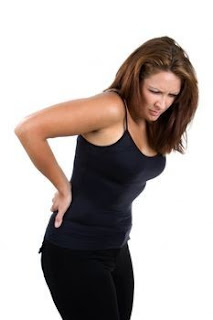Popular Treatment Methods For Trochanteric Bursitis
As we age, the natural lubricants in our bodies that surround the joints tend to break down, and the sensitive areas can become inflamed and painful. One of the most common examples of this aging related medical condition is known as Trochanteric bursitis and it directly affects the hip joint. Limited movement is only one of the symptoms of this incapacitating condition, one that is also thankfully treatable.
Symptoms
Trochanteric bursitis will usually begin with feelings of tenderness and pain on the outside of the hip joint, and the skin may feel a bit warm to the touch. Over time, the pain increases to the point of occurring every time that joint is moved, through walking, standing or even sitting for lengths of time. The pain will range from mild discomfort to jarring jolts of chronic pain that seem to have no relief, not even when lying down. Any pressure on the affected hip will cause pain, especially when lying on your side.
Causes
The cause of this condition can be from a wide variety of reasons. Blows to that particular hip bone could begin the problem, but more often than not the true cause lies in simple aging. As we age, our bodies begin to lose its natural lubricants that are stored in tiny sacs surrounding each joint, called bursa. As the bursa begins to weaken, they can become irritated by the movement of the joint they surround, and become swollen. Once they swell, the movement of the joint puts additional pressure on them, causing sometimes excruciating pain.
The most common complaint of patients of a certain age is pain in the hip, most often caused by this form of bursitis. Left untreated, it can quickly become debilitating, every step causing chronic pain, and limiting the range of movement, day by day. The only effective course of treatment will include methods to alleviate the pain, and reduce the inflammation of the bursa surrounding the outside of the hip. Seeing your doctor is the first step to take.
Diagnosis and treatment
Once the doctor has run the necessary tests and taken x-rays to determine whether the cause of the pain is actually this form of bursitis and not something similar like tendonitis, the next step is usually prescribing anti-inflammatory medicines to reduce the inflammation of the bursa. After that, patients with this condition are then sent to physical therapy sessions, where they will be taught various exercises to strengthen the muscles around the joint, reducing the pressure on the bursa, as well as regaining some flexibility and movement. Surgery is usually only considered after all else has failed.
Typical Exercises
The typical exercises done through physical therapy to combat this condition will concentrate on the four muscle groups that surround the hip bone. These are the gluteal muscles, the illiotibial band that connects the hip joint, the hip flexor muscles, and the hamstring. Stretches designed to rebuild strength, and add flexibility to these areas will be the main focus of any exercises undergone during this phase of treatment.
The first such exercise is for the gluteal area, and is called the gluteal stretch. Lying on the back, the knee that aligns with the injured hip is slowly pulled back towards the opposite shoulder, slowly stretching that muscle. Next, a stretching exercise designed for the illiotibial band is performed standing up. This muscle runs from the side of the knee to the hip, so by extending the leg and crossing it gently to the opposite side, this band will become more flexible over time, and place less pressure on the inflamed hip joint.
Simple forward and backward movements of the legs and knees, like those in gentle lunges will help to stretch both the hamstring, and the hip flexor muscles. All exercises to combat the effects of Trochanteric bursitis should be done safely, under the supervision of a physical therapist and if any pain is felt, stop them immediately, or risk worsening your condition.
Want more information on how Trochanteric bursitis can be effectively treated and managed? The experts at Lakeland Spine Center have been successfully treating this, and other related conditions for years, so call them today for an immediate consultation. Also check out our new page on Trochanteric Bursitis.
Article Source: http://EzineArticles.com/?expert=Juanita_Swindell












0 comments:
Post a Comment